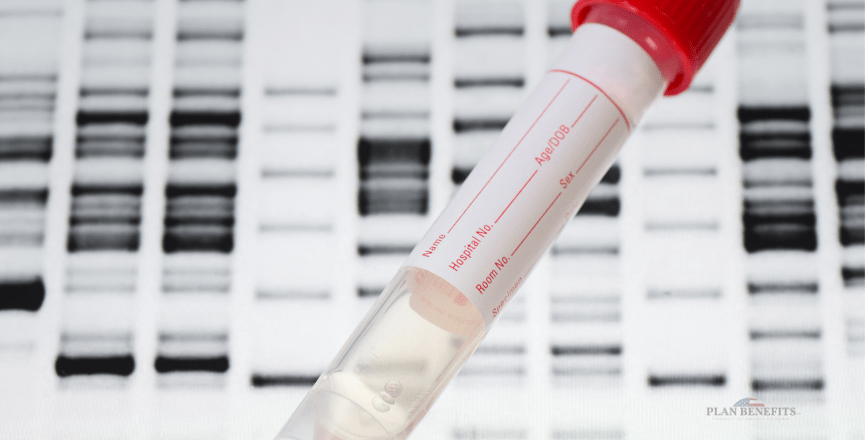DNA paternity testing has transformed the way families establish biological relationships. Whether it’s for legal purposes, personal reassurance, or medical history, DNA testing provides an almost foolproof method of confirming paternity. But how does it work? What should you expect from the process? And what options do you have if you need results before a child is even born? In this guide, we’ll break down the science behind paternity testing, its reliability, and your best options for getting tested.
The Science Behind DNA Paternity Testing
At its core, DNA paternity testing relies on the unique genetic blueprint every individual inherits from their parents. DNA, or deoxyribonucleic acid, is the molecule that carries genetic instructions for growth, development, and biological function. Each person’s DNA is a combination of their mother’s and father’s genetic material. This means that by comparing a child’s DNA to that of a potential father, scientists can determine with near certainty whether a biological relationship exists.
A standard paternity test compares specific regions of DNA known as genetic markers. Since a child inherits half of their DNA from each parent, testing laboratories analyze these markers to identify shared genetic sequences. If enough markers match, paternity is confirmed with a probability of 99.99% or higher.
How Paternity Testing Works
The paternity testing process is surprisingly simple and involves only a few steps:
- Sample Collection – The most common method of collecting DNA for paternity testing is through a cheek swab (buccal swab). This involves gently rubbing a cotton swab inside the cheek to collect epithelial cells containing DNA. Other sample types, such as blood, hair follicles, and even prenatal samples, can also be used depending on the circumstances.
- Laboratory Analysis – Once the samples are collected, they are sent to a laboratory where scientists extract the DNA and analyze specific genetic markers.
- Comparison and Verification – The child’s DNA markers are compared to those of the alleged father. If the patterns align at multiple key locations, the probability of paternity is calculated. In cases where the alleged father is not the biological parent, the probability will be nearly 0%.
- Results Delivery – Test results are usually available within a few days and are often accessible online or via mail, depending on the provider.
If you’re looking for a fast and accurate paternity test, you can explore this option for a reliable, confidential testing service.
Legal vs. At-Home Paternity Testing
There are two primary types of paternity tests: legal tests and at-home (informational) tests. While both provide accurate results, their intended uses differ.
At-Home Paternity Tests
At-home paternity tests are ideal for personal knowledge. These tests are affordable, easy to use, and do not require medical supervision. The process involves ordering a test kit, collecting samples at home, and mailing them to a laboratory for analysis. However, because the chain of custody is not legally documented, the results are not admissible in court.
Legal Paternity Tests
Legal paternity tests follow strict chain-of-custody protocols, ensuring that the test results can be used in legal proceedings such as child support cases, custody disputes, and inheritance claims. This type of test requires sample collection at an accredited facility under the supervision of a neutral third party.
If you need court-admissible DNA testing, consider using this service, which provides legally valid results.
Prenatal Paternity Testing: Is It Possible?
Many people are surprised to learn that paternity can be established before a baby is born. Prenatal paternity testing allows expectant parents to determine biological relationships without waiting for birth.
There are three main types of prenatal DNA testing:
- Non-Invasive Prenatal Paternity Testing (NIPP) – This method involves analyzing fetal DNA present in the mother’s bloodstream. A simple blood draw from the mother and a cheek swab from the alleged father can determine paternity with over 99% accuracy. This is the safest option since it poses no risk to the baby.
- Chorionic Villus Sampling (CVS) – Conducted between 10-13 weeks of pregnancy, this procedure extracts placental tissue to obtain fetal DNA. While highly accurate, CVS carries a small risk of miscarriage.
- Amniocentesis – Performed after 15 weeks of pregnancy, this test involves withdrawing a small amount of amniotic fluid. While accurate, it also carries a slight risk of complications.
For a non-invasive prenatal paternity test, you can check out this highly recommended provider.
Choosing the Right Paternity Test
Selecting a paternity test depends on several factors, including your reason for testing, budget, and whether you need legally binding results. When evaluating providers, consider:
- Accuracy and Reliability – Ensure the lab is accredited and follows industry-standard testing protocols.
- Confidentiality – Look for providers that prioritize discretion and secure data handling.
- Turnaround Time – Some labs offer expedited processing if you need results quickly.
- Cost – Prices vary depending on the type of test and whether it is legally admissible.
A trusted option for accurate and confidential paternity testing is available here.
Conclusion
DNA paternity testing is a groundbreaking tool that provides clarity and certainty in determining biological relationships. Whether you need results for legal reasons, personal reassurance, or even before birth, modern technology offers safe, reliable, and accessible solutions.
If you’re considering a test, make sure you choose a trusted provider with a proven track record. To get started, explore this highly accurate testing option.
With the right information and testing service, you can gain peace of mind and confidently move forward with your next steps.
DNA paternity testing helps find out if a man is the biological father of a child. It works by looking at the genetic material, or DNA, that is passed down from parents to their children. This test can tell with almost complete certainty if two people are related. DNA tests are used for different reasons like legal cases, personal questions, or even medical situations.
How DNA Paternity Testing Works
DNA is like a blueprint of who we are, and it’s passed down from both parents. Half of a child’s DNA comes from their mother, and the other half comes from their father. To test for paternity, DNA samples are taken from the child and the potential father. This is usually done with a quick and painless cheek swab. The samples are then sent to a lab where scientists compare them to see if the two people share enough of the same genetic markers. If the markers match, paternity is confirmed with 99.9% accuracy.
Why Do People Get Paternity Tests?
People take paternity tests for lots of reasons. Some just want to know for personal reasons, like figuring out family relationships. Others might need a test for legal reasons, such as in child custody or child support cases. Sometimes, paternity tests are required for immigration to prove that family members are related. There’s even a type of test called a prenatal paternity test that can be done before the baby is born.
Types of DNA Paternity Tests
There are different kinds of paternity tests depending on what you need:
- Home Paternity Test: This is the most common type. It’s easy to do at home with a cheek swab. Once the sample is collected, it’s sent to a lab for testing. This type of test is usually done for personal knowledge, but it can’t be used in court.
- Legal Paternity Test: This test is used when the results need to be shown in court, like in child custody or support cases. Legal paternity tests follow strict rules, including having someone witness the sample collection, to make sure everything is done properly.
- Prenatal Paternity Test: This test is done before the baby is born. It’s a non-invasive test, which means it’s safe for both the mom and baby. The test uses a blood sample from the mother and a cheek swab from the potential father.
- Immigration DNA Test: In some immigration cases, people need to prove their family relationships to move to another country. DNA testing helps show that parents, children, or other relatives are biologically related.
- Sibling, Grandparent, and Other Relationship DNA Tests: Besides paternity tests, there are other tests that check if two people are related. For example, there are tests to see if two people are siblings, if someone is a biological grandparent, or if other family ties exist.
Why DNA Paternity Testing Matters
There are many important reasons to know who the biological father of a child is. It can help in legal cases, like making sure a child gets the right support or inheritance. Sometimes, it helps families feel more connected or settle questions about family history. For immigration purposes, proving a biological relationship through DNA testing can help families reunite.
DNA paternity tests are trusted because they are very accurate. When done right, these tests can confirm relationships with near certainty. Results are usually ready within a few days, so people don’t have to wait long to get answers.
Conclusion
DNA paternity testing is a simple and reliable way to find out if someone is a child’s biological father. Whether it’s for legal reasons, personal curiosity, or immigration, DNA tests provide clear answers. Knowing about the different types of tests and how they work can help you pick the right one for your needs. Click here to see how to order your home testing kit.



